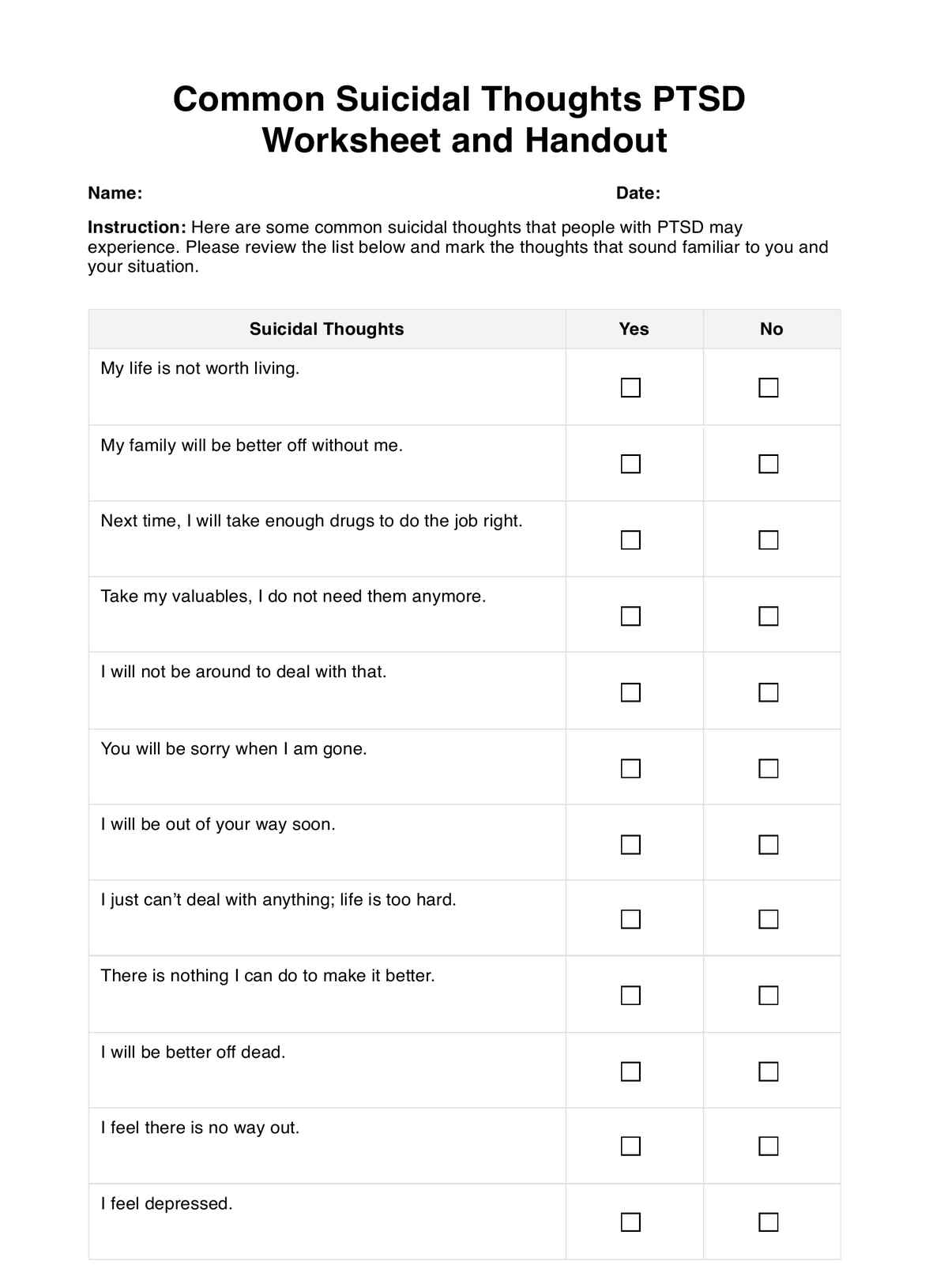The time needed to complete it can vary, depending on individual introspection and the depth of their thoughts. Some may finish it in one sitting, while others may take several sessions to address their feelings thoroughly.

Common Suicidal Thoughts PTSD Worksheet and Handout
Manage PTSD-related suicidal thoughts with the Common Suicidal Thoughts PTSD Worksheet and Handout. Take control of your mental well-being now.
Common Suicidal Thoughts PTSD Worksheet and Handout Template
Commonly asked questions
You can access and use the worksheet and handout anytime. It's most effective when individuals with PTSD experience recurring suicidal thoughts. It helps them evaluate their emotional state, seek professional help, and express their feelings effectively.
It is meant for individuals with Post-Traumatic Stress Disorder (PTSD) experiencing suicidal thoughts. It can be used by those individuals themselves, mental health professionals, therapists, support groups, or loved ones looking to offer assistance and support to someone in need.
EHR and practice management software
Get started for free
*No credit card required
Free
$0/usd
Unlimited clients
Telehealth
1GB of storage
Client portal text
Automated billing and online payments











